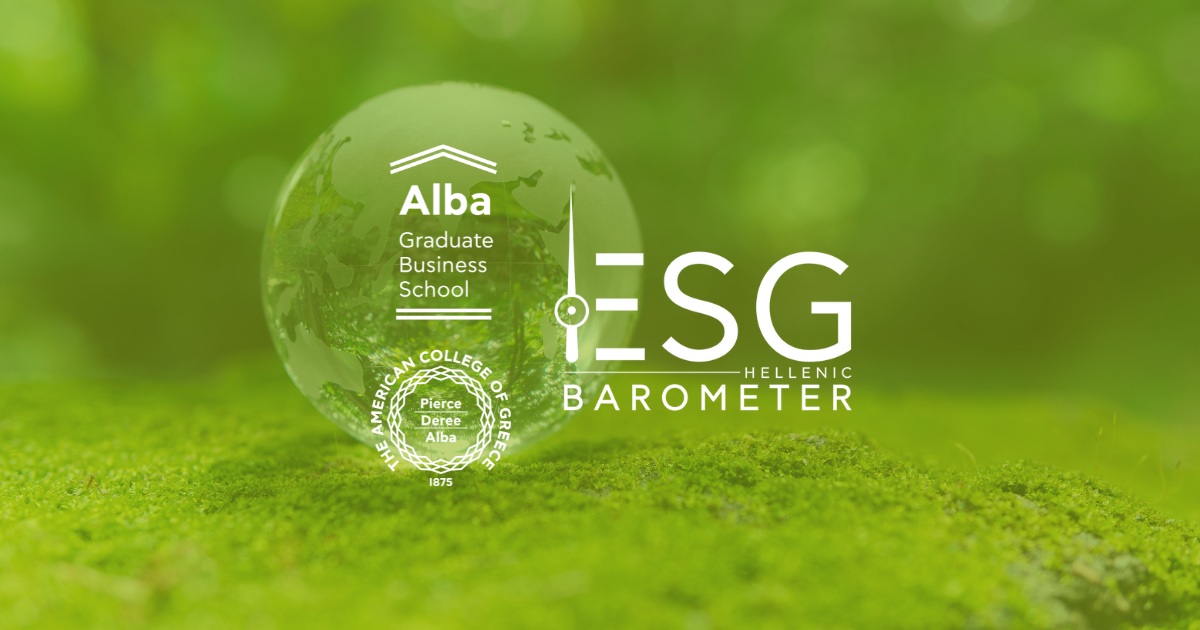LESS THAN MINUTE
Decoupling business growth from Green House Gas emissions
28 Jul 2017
CONTACT DETAILS
More information here

In the recent years, the notion of sustainability has earned increasing attention due to public concerns regarding climate change. Regulatory and market pressures are forcing firms to be eco-efficient, i.e., to design products and services taking into account energy and material savings during production and the emissions that will be generated not only during production but also during the lifecycle of the product or service. Increasing the economic value-added per environmental footprint is a major strategic target for firms that consider themselves leaders.
The major element of environmental footprints is the estimation of Green House Gas emissions. These emissions are categorized as Scope 1, Scope 2 and Scope 3 emissions. Scope 1 emissions are all emissions generated by sources owned and controlled by the firm, e.g., process emissions, chemicals used in the production, logistics of the company if not outsourced, leased vehicles to employees, etc. Scope 2 emissions are the emissions generated by purchased electricity/energy. Scope 3 emissions are all other emissions not directly controlled by the firm, e.g., emissions generated by suppliers and the supply chain.
In addition, firms are increasingly starting to publicly disclose emissions reports from their operations and services while a high percentage of firms are committing to reduction targets. See for example cdp.net. This practice is followed by firms than span all industry sectors, e.g., health care, financials, industrials, information technology, consumer discretionary, materials, consumer staples, and energy.
There are three incentives for firms to disclosure and report their emissions. The first incentive is that investors are demanding to examine and evaluate these reports before they decide to invest in a firm. Customers also demand emission reports from firms. For example, Infosys India reports that 85% of their customers ask for emissions reports before making their decision. As another example, the European Investment Bank requires an environmental footprint analysis with a loan application.
The second incentive is that environmental footprint is a reliable proxy for measuring operational efficiency. In the manufacturing sector, firms that follow the philosophy of lean manufacturing are eliminating waste from their operations which results to a lower environmental footprint and lower Scope 1 and Scope 2 emissions. Similarly, an energy efficient firm consumes less energy and thus has lower Scope 2 emissions for the same output compared to a firm that uses energy inefficiently. The third incentive is the anticipation of future environmental regulations and the management of risks that might arise in the future.
The unit of reporting though is not uniform across firms and industries and thus is not always straight forward to compare and rank firms.
Emissions and reduction targets are reported either as absolute or intensity emissions. Absolute emissions are the total emissions of the firm. Intensity emissions are the absolute emissions normalized per employee, per square foot, per product output, etc. While a firm is free to choose how it reports emissions (absolute or intensity), if it publicly commits to a future reduction target, this target should to be measured using the same choice of metrics making the firm’s reporting comparable across years.
Reporting absolute or intensity emissions was a major issue of debate among politicians during the discussion for the Kyoto protocol. To see why, consider the following example: a firm grows by acquiring another firm. The absolute emissions of the firm might increase substantially while the intensity emissions (emissions per employee for example) might decrease. Thus, while the firm harms the environment more than before, it will report reduced emissions. Obviously, reporting absolute emissions is more beneficial for the environment but it might be an obstacle for growth for the firm.
It is generally considered that growth and reduction of absolute emissions at the same time is a difficult and risky target. Nevertheless, the sample of firms that have managed to decouple business growth and emissions reduction by growing while reducing their absolute emissions is increasing.
Firms such as Walmart de Mexico, Givaudan in Switzerland, Lixil in Japan and numerous others than span industry sectors and countries have decoupled growth and emissions reduction. These firms realised that process energy efficiency initiatives, the use of an internal carbon pricing as an internal benchmark, the identification and elimination of waste, are drivers of innovation that could turn the challenge of emissions reduction from risk management to business success.





